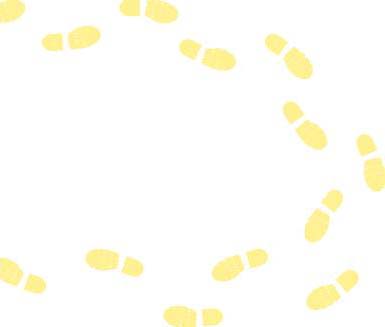How to Use a Map and Compass
The Map
Information found on the outer edges of the map are as follows
- The map title
- The edition, series, and sheet number. If you are using more than one map these must be the same as information changes every time a map is made.
- Scale: 1:50,000
- The Legend- This tells you what the symbols found on the map
represent, everything from a building to a vineyard.
- Contour Interval- This is used to calculate your elevation.
- Grid Magnetic Angle- The difference between the three norths, true
north, grid north, and magnetic north. True north being the north pole,
grid north being the north used by map makers, and magnetic north being
the direction in which the needle in the compass points to. As the compass
points to a magnetic field that is constantly moving it is impossible to
have only one north.
- Scale - There are three scales provided to measure distance
Relief of the Ground
This is shown by the use of contour lines. These are the brown lines
shown on the map. Each line runs along areas with equal elevation,
measured from mean sea level. As it says on the border of the map the
contour interval is 20 meters. This simply means that the height
difference between each line is 20 meters. Lines close together
indicate a steep slope or rugged ground as lines further apart
indicate relatively flat ground. By drawing a cross section the shape
of the ground can be determined.
The more common features are:
- The Saddle
- The Convex slope
- The Concave slope
- Re entrants
- Direction of flow of rivers
Measuring Distances
Measuring straight line distances can be accomplished using a ruler or
sheet of paper. Simply compare the distance with the scale on the map.
If a road or route has to be measured this can be done using a piece of
string or the lanyard off the compass. Start at point A feeding the
string along the route until the destination has been reached. Measure
against the string to get your distance.
The Grid Reference System
Grid references are used to determine your position on the ground, for
navigating from one point to another, and for planning a route.
This is accomplished by the use of eastings and northings. Eastings are
the grid lines which run north to south and measure distance from east
to west. Northings run from east to west and measure distance from north
to south. As you see on the map these lines are numbered. Each square is
1,000 meters squared or 1 kilometer. To obtain a four figure grid, the
easting is used first then the northing. To obtain a six figure grid
reference the square is divided into 10 equal parts. This is done using
a romer.Making sure to use the right scale for the map, place the hole
of the romer, or the point were the two zeros meet over the object or
place you require a grid for, read the numbers on the scale. This will
give you a position with in 100 meters
The Compass
A compass is an instrument used to determine geographical direction. The needle on
a compass will always point towards magnetic north unless interference is present in
the form of metal objects such as vehicles, Metal structures, a weapon or metal
tools, if held to close.
Parts of the Compass
Each compass will have the following parts:
- A magnetic needle (The red section points towards North).
- Housing for the needle, this is usually liquid filled and will contain
a north arrow and the magnetic declination adjusting mechanism and scale,
and easting lines.
- The dial graduated in mils or degrees.
- The base, usually a hard see through surface containing both a
1:50,000 scale and a 1:25,000 scale for finding grid references and a
direction arrow used to read the bearing.
- An aiming device used to line you up with your direction of travel.
- A lanyard for securing the compass to your body.
Setting the Magnetic Declination
From the information on the map the difference between grid and magnetic
north has to be calculated. Once this is set on the compass there is no
need to use a romer to determine bearings and no need for conversions.
Finding a Bearing
This is done similar to the romer. Draw a line on the map between the two
points. Lay the compass body along the line making sure to line the
easting in the compass housing with the eastings on the map and 6,400 mils
is at the top of the map. Rotate the dial on the compass until the magnetic
needle is centered in the arrow in the housing. Once this has been done
you have the bearing between the two points. Remove the compass from the
map and read the bearing.
Walking on a Bearing
Once you have your bearing and distance between your position and your
destination you are ready to navigate. Check the bearing to ensure it is
correct. Raise the compass in front of your body, rotate both the
compass and yourself as one and line up the needle within the arrow.
Once in place this is the direction you want to travel. Take aim and
pick out a feature in your line of travel and walk to it.Repeat this
process until you reach your destination.
